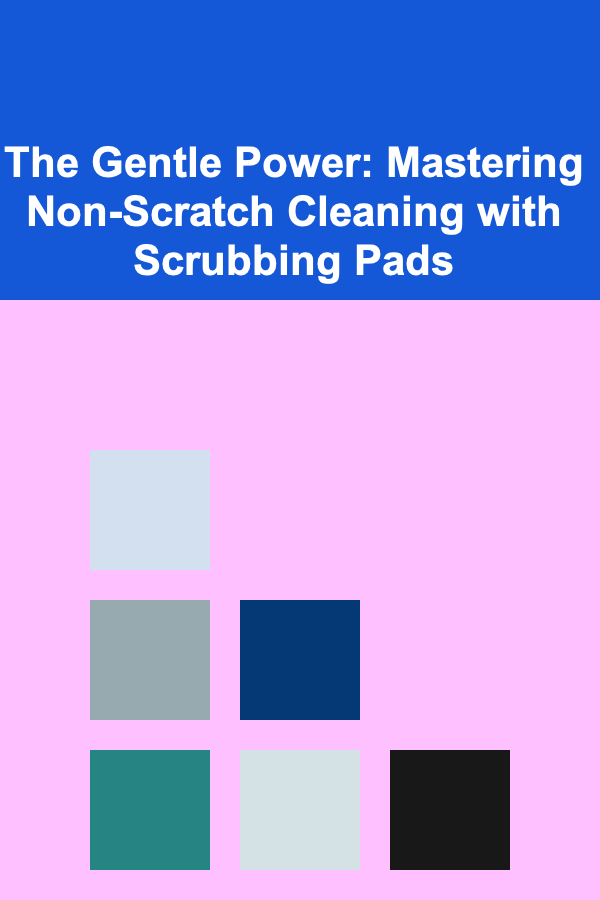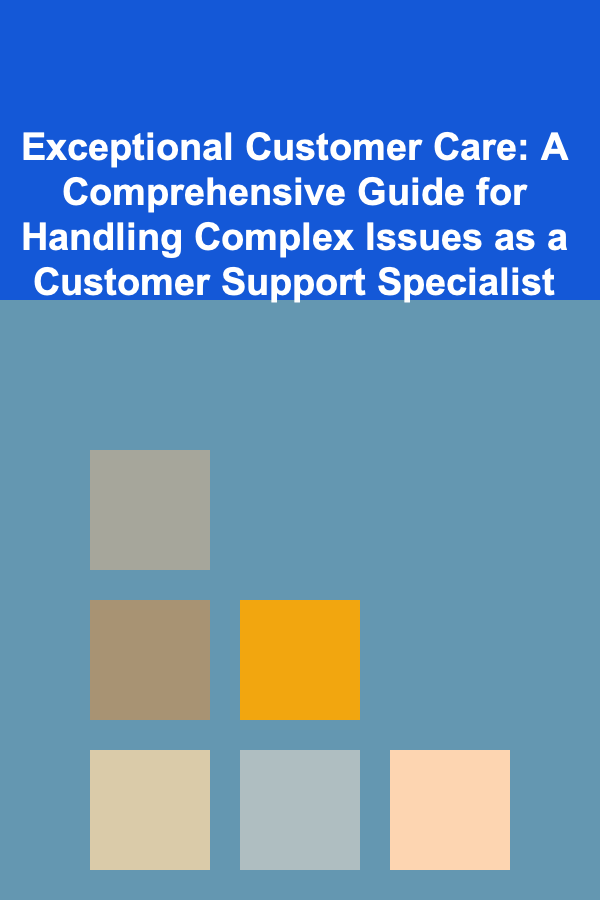
The Gentle Power: Mastering Non-Scratch Cleaning with Scrubbing Pads
ebook include PDF & Audio bundle (Micro Guide)
$12.99$7.99
Limited Time Offer! Order within the next:

In the realm of cleaning, where the battle against grime and stubborn stains rages on, the scrubbing pad stands as a trusty weapon. But wielding this tool effectively requires more than just elbow grease. Especially when dealing with delicate surfaces, choosing the right pad and employing the correct techniques is paramount to achieving a sparkling clean without inflicting unsightly scratches. This comprehensive guide delves deep into the art of non-scratch cleaning with scrubbing pads, equipping you with the knowledge and strategies to tackle a wide range of cleaning challenges with confidence and care.
Understanding the Landscape of Scrubbing Pads
Before embarking on your cleaning journey, it's essential to understand the diverse world of scrubbing pads. Each type boasts unique characteristics that make it suitable for specific tasks. A misinformed choice could lead to irreversible damage, turning a cleaning project into a costly repair.
Abrasiveness: The Key Differentiator
The primary factor differentiating scrubbing pads is their abrasiveness. This refers to the pad's ability to remove material from a surface. More abrasive pads are effective for heavy-duty cleaning, while less abrasive pads are ideal for delicate surfaces.
Here's a breakdown of common scrubbing pad types, ranked from least to most abrasive:
- Microfiber Pads: These are the gentlest option, relying on the unique structure of microfiber to lift dirt and grime. They are excellent for polishing and light cleaning on sensitive surfaces like glass, stainless steel, and painted surfaces. They are not typically considered 'scrubbing' pads in the traditional sense but are excellent non-scratch options.
- Melamine Foam Pads (Magic Erasers): These pads use a unique micro-abrasive foam structure to gently lift dirt and stains. They are effective on a variety of surfaces, including walls, floors, and countertops, but should be used with caution on high-gloss or delicate finishes as they can, with enough pressure, dull the shine over time. Always test in an inconspicuous area first.
- Non-Scratch Scrubbing Sponges: These sponges feature a scrubbing surface made from materials like cellulose or nylon, designed to be gentle on surfaces while providing effective cleaning power. They are suitable for cleaning cookware, sinks, and countertops. They often come in a dual-sided design, with a softer sponge side for wiping and a scrubbing side for tackling tougher messes. Pay close attention to the manufacturer's label - some "non-scratch" pads are less gentle than others.
- Non-Abrasive Nylon Scrubbing Pads (Often White or Blue): These pads are made from tightly woven nylon fibers and are designed to be non-scratching on most surfaces. They're a good choice for cleaning coated cookware, delicate ceramics, and other surfaces prone to scratches. They are more aggressive than microfiber or melamine foam but still relatively gentle.
- General Purpose Scrubbing Pads (Often Green): These pads are the workhorses of the cleaning world. They offer a good balance of cleaning power and durability, making them suitable for a wide range of tasks. However, they are generally too abrasive for delicate surfaces and should be reserved for tough stains on more resilient materials.
- Heavy-Duty Scrubbing Pads (Often Brown or Black): These are the most abrasive type of scrubbing pad, designed for tackling the most stubborn messes and grime. They are typically used for cleaning grills, ovens, and other heavily soiled surfaces. Never use these on surfaces you want to avoid scratching.
Material Matters: Composition and Durability
The material of the scrubbing pad also plays a crucial role in its performance and longevity. Common materials include:
- Cellulose: A natural material derived from wood pulp, cellulose sponges are absorbent and biodegradable. They are a good eco-friendly option but tend to wear down more quickly than synthetic alternatives.
- Nylon: A synthetic polymer known for its strength and durability, nylon scrubbing pads are resistant to abrasion and chemicals. They are a good choice for heavy-duty cleaning.
- Polyester: Another synthetic polymer, polyester is less abrasive than nylon but still offers good durability. It is often used in non-scratch scrubbing pads.
- Polyurethane: A flexible and durable foam, polyurethane is often used in sponges and scrubbing pads. It offers good absorbency and cushioning.
- Melamine Foam: As mentioned above, this unique foam offers gentle abrasion for removing stains and dirt.
- Microfiber: Woven fibers that attract dirt and grime; best for polishing and light cleaning.
The Art of Selection: Choosing the Right Pad for the Task
Selecting the appropriate scrubbing pad is crucial for achieving a clean and scratch-free surface. Consider the following factors when making your choice:
Surface Type: Matching the Pad to the Material
The type of surface you are cleaning is the most important factor to consider. Delicate surfaces like glass, stainless steel, and painted surfaces require non-scratch scrubbing pads or microfiber cloths. More resilient surfaces like ceramic tile and concrete can tolerate more abrasive pads. Here are some surface specific suggestions:
- Glass: Microfiber cloths or sponges with non-scratch cellulose or nylon scrubbing sides. Avoid abrasive pads, which can scratch the surface.
- Stainless Steel: Microfiber cloths, sponges with non-scratch scrubbing sides, or melamine foam pads (test in an inconspicuous area first). Be sure to scrub with the grain of the stainless steel to avoid creating swirl marks.
- Painted Surfaces: Microfiber cloths or very gentle cellulose sponges. Avoid any abrasive pads, as they can easily remove paint.
- Non-Stick Cookware: Non-scratch nylon scrubbing pads or sponges specifically designed for non-stick surfaces. Avoid abrasive pads, which can damage the coating.
- Ceramic Cooktops: Specialty ceramic cooktop cleaning pads or sponges are designed to remove burnt-on food without scratching the surface. Follow the manufacturer's instructions carefully.
- Tile and Grout: Non-scratch nylon scrubbing pads or sponges. For stubborn grout stains, consider using a grout brush in conjunction with a cleaning solution.
- Acrylic and Fiberglass: Sponges with non-scratch scrubbing sides or microfiber cloths. Avoid abrasive pads, as they can scratch the surface.
The Nature of the Mess: Identifying the Stain or Grime
The type of mess you are cleaning also influences your choice of scrubbing pad. Light dirt and grime can be easily removed with a microfiber cloth or a gentle sponge. Stubborn stains and dried-on food may require a more abrasive pad, but always start with the gentlest option possible.
- Light Dirt and Dust: Microfiber cloths are often sufficient for these types of messes.
- Grease and Oil: Sponges with non-scratch scrubbing sides or nylon scrubbing pads can help break down grease and oil.
- Dried-On Food: Soaking the area first can help loosen the food particles. Then, use a non-scratch scrubbing pad or sponge to gently scrub away the residue.
- Stubborn Stains: Consider using a specialty cleaning solution designed for the specific type of stain. Then, use a non-scratch scrubbing pad or sponge to work the solution into the stain.
Testing Before You Commit: A Crucial Step
Before using any scrubbing pad on a delicate surface, always test it in an inconspicuous area first. This will allow you to assess the pad's abrasiveness and ensure that it does not scratch or damage the surface. Choose a hidden spot, such as the back of a cabinet or the inside of a drawer, and gently scrub a small area. Observe the surface closely for any signs of scratching or discoloration. If you notice any damage, discontinue use of the pad.
Mastering the Technique: The Secrets to Non-Scratch Scrubbing
Even with the right scrubbing pad, improper technique can lead to scratches and damage. Here are some key principles to follow for non-scratch scrubbing:
The Gentle Touch: Applying the Right Amount of Pressure
The most common mistake people make when scrubbing is applying too much pressure. This can force abrasive particles into the surface, causing scratches. Instead, use a gentle, circular motion and let the scrubbing pad do the work. If the mess is stubborn, try soaking the area first or using a stronger cleaning solution. Resist the urge to press down hard.
The Power of Lubrication: The Importance of Water and Cleaning Solutions
Water and cleaning solutions act as lubricants, helping to reduce friction between the scrubbing pad and the surface. This minimizes the risk of scratching. Always wet the scrubbing pad and the surface before scrubbing. You can also use a cleaning solution to further enhance lubrication and cleaning power. Choose a cleaning solution that is appropriate for the surface you are cleaning.
Circular Motion: The Key to Even Cleaning
Using a circular motion when scrubbing helps to distribute the pressure evenly and prevents scratching. It also allows you to clean a larger area more efficiently. Avoid scrubbing in straight lines, as this can create streaks or scratches.
Rinsing Frequently: Removing Debris and Preventing Re-Abrasiveness
Rinsing the scrubbing pad frequently removes debris and prevents it from becoming re-embedded in the surface, which can cause scratches. Rinse the pad under running water every few minutes, or as needed. You can also use a separate bucket of clean water for rinsing. This will help to keep the scrubbing pad clean and effective.
Working in Sections: Maintaining Control and Avoiding Overlap
When cleaning a large surface, work in small sections to maintain control and avoid overlap. This will ensure that you clean the entire surface evenly and prevent scratches. Overlapping scrubbing motions can concentrate pressure and increase the risk of scratching.
Beyond the Basics: Advanced Techniques for Specific Cleaning Challenges
While the general principles outlined above apply to most cleaning situations, some specific challenges require more advanced techniques.
Tackling Burnt-On Food: The Power of Soaking and Patience
Burnt-on food can be notoriously difficult to remove. The key is to soak the area first to loosen the food particles. Fill the pot or pan with water and add a tablespoon of baking soda or dish soap. Bring the water to a boil and then let it simmer for 15-30 minutes. This will help to soften the burnt-on food. After soaking, use a non-scratch scrubbing pad or sponge to gently scrub away the residue. If the food is still stubborn, repeat the soaking process or try using a specialty cleaner designed for burnt-on food.
Removing Hard Water Stains: The Acidic Solution
Hard water stains are caused by mineral deposits that can build up on surfaces over time. These stains can be difficult to remove with ordinary cleaning solutions. An effective solution is to use an acidic cleaner, such as vinegar or lemon juice. Apply the cleaner to the stain and let it sit for a few minutes. Then, use a non-scratch scrubbing pad or sponge to gently scrub away the stain. Rinse thoroughly with water. For stubborn stains, you may need to repeat the process or use a stronger acidic cleaner, such as CLR.
Cleaning Grout: The Importance of Ventilation and Protective Gear
Cleaning grout can be a challenging task, as grout is porous and easily absorbs dirt and grime. A common approach is to use bleach or a bleach-based cleaner. However, it's crucial to ensure adequate ventilation when working with bleach, as the fumes can be harmful. Open windows and doors to allow fresh air to circulate. Additionally, wear gloves and eye protection to protect your skin and eyes from irritation. Apply the bleach cleaner to the grout and let it sit for a few minutes. Then, use a grout brush or a non-scratch scrubbing pad to scrub away the dirt and grime. Rinse thoroughly with water.
Reviving Dull Surfaces: The Polishing Touch
Over time, some surfaces can become dull or scratched due to everyday wear and tear. In these cases, polishing can help to restore the surface's shine and luster. Use a microfiber cloth and a polishing compound designed for the specific surface you are polishing. Apply the polishing compound to the cloth and gently rub it onto the surface in a circular motion. Continue polishing until the surface is smooth and shiny. Wipe away any excess polishing compound with a clean microfiber cloth.
Extending the Life of Your Scrubbing Pads: Maintenance and Care
Proper maintenance and care can significantly extend the life of your scrubbing pads and ensure that they remain effective for longer. Here are some tips:
- Rinse Thoroughly After Each Use: This will remove any debris and prevent it from hardening on the pad.
- Squeeze Out Excess Water: This will help to prevent mold and mildew growth.
- Store in a Dry Place: This will further prevent mold and mildew growth.
- Replace Regularly: Even with proper care, scrubbing pads will eventually wear out. Replace them regularly, especially if they become frayed, torn, or discolored.
- Consider Dishwasher Cleaning: Some scrubbing pads can be cleaned in the dishwasher. Check the manufacturer's instructions to see if this is an option. Dishwashing can help sanitize the pads and remove stubborn grease and grime.
The Eco-Conscious Cleaner: Sustainable Scrubbing Options
As awareness of environmental issues grows, many consumers are seeking more sustainable cleaning options. Fortunately, there are several eco-friendly scrubbing pads available on the market:
- Cellulose Sponges: Made from wood pulp, cellulose sponges are biodegradable and compostable.
- Bamboo Scrubbing Pads: Made from bamboo fibers, these pads are renewable and biodegradable.
- Recycled Scrubbing Pads: Made from recycled materials, such as plastic bottles or clothing scraps.
- Reusable Scrubbing Cloths: Washable and reusable scrubbing cloths offer a sustainable alternative to disposable scrubbing pads.
By choosing eco-friendly scrubbing pads, you can reduce your environmental impact and contribute to a more sustainable future.
Conclusion: The Power of Gentle Cleaning
Mastering the art of non-scratch cleaning with scrubbing pads is an invaluable skill for anyone who wants to keep their home clean and well-maintained. By understanding the different types of scrubbing pads, choosing the right pad for the task, employing proper techniques, and practicing regular maintenance, you can achieve a sparkling clean without damaging delicate surfaces. Remember the key principles: use the gentlest pad possible, apply light pressure, lubricate with water or cleaning solutions, and rinse frequently. With a little practice and patience, you'll be able to tackle any cleaning challenge with confidence and care, leaving your surfaces looking their best for years to come.

Exceptional Customer Care: A Comprehensive Guide for Handling Complex Issues as a Customer Support Specialist
Read More
How to Create a Functional and Stylish Home for Less
Read More
How to Decorate for the Holidays with Items You Already Have
Read More
How to Optimize Your Content for SEO to Boost Visibility: A Detailed Guide
Read More
How to Set Up a Checklist for Quantifying Your Achievements on Your Resume
Read More
Innovating the Retail Experience: Trends, Technologies, and Strategies for Today's Manager
Read MoreOther Products

Exceptional Customer Care: A Comprehensive Guide for Handling Complex Issues as a Customer Support Specialist
Read More
How to Create a Functional and Stylish Home for Less
Read More
How to Decorate for the Holidays with Items You Already Have
Read More
How to Optimize Your Content for SEO to Boost Visibility: A Detailed Guide
Read More
How to Set Up a Checklist for Quantifying Your Achievements on Your Resume
Read More